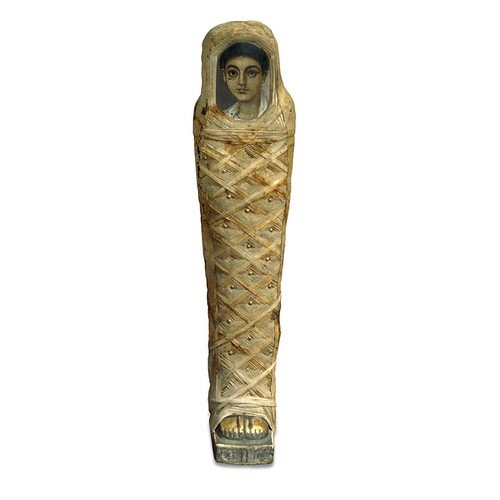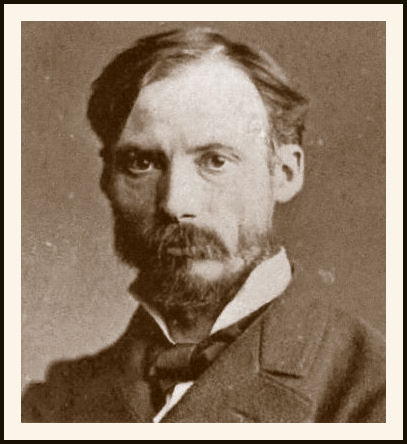
Welcome to my virtual gallery featuring beautiful masterpieces from all ages of history, from the ancient past to the present. Be sure to click the image for a full size view.
Abbey
(1)
Achenback
(1)
Ancient Egyptian Art
(1)
Ancient Greek Art
(2)
Bocklin
(1)
Botticelli
(1)
Bruegel
(2)
Brullov
(1)
Carracci
(1)
East Indian Architecture
(1)
Edmund Blair Leighton
(1)
Gothic Architecture
(1)
Gothic Art
(1)
Jacobs
(1)
Jean Leone Gerome
(2)
Makart
(1)
Maxfield Parrish
(2)
Millais
(1)
Presto
(1)
Regnault
(1)
Renoir
(2)
Rubens
(1)
Tapestries
(1)
Waterhouse
(1)
Friday, October 15, 2010
Edmund Blair Leighton - The Accolade
The Accolade was painted by English artist Edmund Blair Leighton (1853-1922). Known for his historical pieces, his talent is clearly evident in this and his other works.


Thursday, October 14, 2010
Mummy Wrapping of Young Boy
This piece of artwork is counted as one of the most important finds in terms of ancient art. Created with a technique called Encaustic Painting, it is the earliest known example of painting an accurate representation of a specific individual.

It is a panel painted using a hot wax technique. The artist would heat the colored wax and then paint the image with the liquid before it turned solid. The panel was inserted in the mummy wrappings of the young boy and contains his body. It is dated to approximately 100 - 120 CE (Common Era or AD) and was found in Egypt. Standing 53 inches high, it consists of linen wrappings, stucco buttons and the inserted portrait measuring 9.5 X16.5 centimeters.

It is a panel painted using a hot wax technique. The artist would heat the colored wax and then paint the image with the liquid before it turned solid. The panel was inserted in the mummy wrappings of the young boy and contains his body. It is dated to approximately 100 - 120 CE (Common Era or AD) and was found in Egypt. Standing 53 inches high, it consists of linen wrappings, stucco buttons and the inserted portrait measuring 9.5 X16.5 centimeters.
Maxfield Parrish
Although Maxfield Parrish painting at the turn of the 20th century, his work is reminiscent of faraway and magical realms. Most of his work appeared on magazine covers and as illustrations in children's books. His work is by far the most underated in serious art circles. This oil painting. called The Lute Players is an oil on panel measuring 19"X15".


Renoir - Two Girls At The Piano
This painting is called Two Girls At The Piano and exemplifies Renoir's delightful style. Known to be the leading painter of French Impressionistic style, his works celebrate feminine beauty and sensuality. His painings are noted for his vibrant use of light and saturated color and delightfully intimate and candid subject matter.




A picture of Pierre Auguste Renoir.
Wednesday, October 13, 2010
Laocoon And Sons
This sculpture of Laocoon and his sons stood in the palace of Ancient Greek Emperor Titus and was rediscovered in the 1500's. By March of 1506, Pope Julius II procured it for his private collection.
What is noteworthy about this sculpture is that is a prime example of Greek Hellenistic art and directly influenced the art of such artists as Michelangelo and Raphael. It was found in fragments and when Michelangelo was asked to reconstruct it, he declined saying his talents were less than those of it original creator. A contest was held to find an artist for the restoration and it was finally brought to it's present state by Venetian architect Jacopo Sansovino.

The ancient Laocoon exerted a potent aesthetic power on the artists of the High Renaissance. The rediscovery of the sculpture - which depicts a Trojan priest punished by the gods for warning his fellow countrymen about the Greek ruse of the Trojan horse - accelerated the rediscovery of the classical aesthetic. The Laocoon became a standard against which Renaissance art was judged, thereby establishing a canon of beauty that influenced the making of art for the next 400 years.
What is noteworthy about this sculpture is that is a prime example of Greek Hellenistic art and directly influenced the art of such artists as Michelangelo and Raphael. It was found in fragments and when Michelangelo was asked to reconstruct it, he declined saying his talents were less than those of it original creator. A contest was held to find an artist for the restoration and it was finally brought to it's present state by Venetian architect Jacopo Sansovino.

The ancient Laocoon exerted a potent aesthetic power on the artists of the High Renaissance. The rediscovery of the sculpture - which depicts a Trojan priest punished by the gods for warning his fellow countrymen about the Greek ruse of the Trojan horse - accelerated the rediscovery of the classical aesthetic. The Laocoon became a standard against which Renaissance art was judged, thereby establishing a canon of beauty that influenced the making of art for the next 400 years.
Tuesday, October 12, 2010
Nike (Victory)
The winged figure of Victory was originally located in a hillside niche high above the Sanctuary at Samothrace. The forward moment of Nike's body is balanced by the powerful back thrust of her wings.
The large open movement, strong contrasts of light and dark because of it deeply sculpted details makes this piece a prime example of Greek Hellenistic Art. The Hellenistic period is dated at around 300 BCE and is characterized by it's ability to convey movement and story as well as cause emotional reaction to those who view it's works. Up until this era, most artwork appeared stiff and abstract or idealized.

The large open movement, strong contrasts of light and dark because of it deeply sculpted details makes this piece a prime example of Greek Hellenistic Art. The Hellenistic period is dated at around 300 BCE and is characterized by it's ability to convey movement and story as well as cause emotional reaction to those who view it's works. Up until this era, most artwork appeared stiff and abstract or idealized.

Carracci - The Samaritan Woman at the Well
Located in the Catacomb of Via Latina outside Rome this painting is linked with the Biblical scripture John 4:1-42. There are a great many versions, however this one is an oil on canvas painted by Italian artist Annibale Carracci around 1593 CE.


Subscribe to:
Comments (Atom)